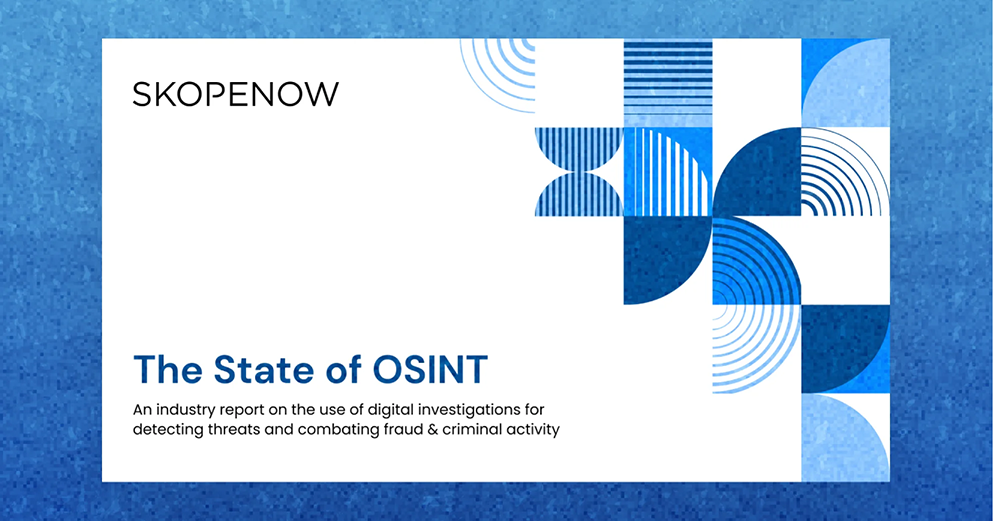January 31, 2025
Strategic Risk in 2025: Confronting an Evolving Threat Landscape
Jake Palmer
Content Manager
Now that 2025’s in full swing, it’s time for organizations to prepare for the year ahead. Virtually all industries face a rapidly shifting landscape of threats and risks. From cyberattacks and insider threats to global supply chain disruptions, the complexity of today’s challenges demands a proactive approach to security risk management. A Strategic Threat and Risk Assessment (STRA) is a comprehensive framework for identifying and mitigating potential threats that can help your organization prepare for the challenges ahead.
However, what will make STRAs truly indispensable in 2025 is the integration of open-source intelligence (OSINT). By harnessing publicly available information, OSINT empowers organizations to build a clearer picture of potential threats, assess vulnerabilities, and support more informed risk management decisions.
What Is a STRA and Why Is It Critical?
Risk is an unavoidable reality for every organization. The goal is to manage it to a justifiable and tolerable level. A Strategic Threat and Risk Assessment provides decision-makers with crucial insights, enabling them to deploy operational resources, develop policies, and design targeted training programs that effectively mitigate and manage threats. By systematically evaluating potential risks, organizations can make informed decisions about preventive and corrective actions, transforming uncertainty into a strategic advantage. Rather than focusing solely on reactive measures, an STRA equips organizations with the foresight to anticipate and prepare for potential scenarios.
Key components of an STRA include:
- Threat Identification: Determining the types of risks your organization faces, from external adversaries to insider threats.
- Vulnerability Assessment: Evaluating weaknesses in current security measures and protocols.
- Likelihood Analysis: Assessing how probable it is that a threat will materialize.
- Impact Evaluation: Understanding the consequences of a threat, including financial losses, reputational damage, and operational disruptions.
These assessments allow organizations to prioritize resources and align security strategies with their risk tolerance, ensuring that no potential threat is overlooked.
How Can OSINT Strengthen STRAs?
Traditional STRAs rely heavily on internal data and historical trends, but this approach often overlooks critical external intelligence. This is where OSINT becomes a game-changer. By leveraging publicly available information, OSINT adds depth and precision to STRAs, enabling security teams to:
- Uncover External Threat Actors: Research adversaries, their tactics, and their motivations through social media, forums, and public records.
- Evaluate Emerging Risks: Stay ahead of trends by analyzing local crime patterns, geopolitical developments, or economic shifts that could impact operations.
- Identify Insider Threats: Detect warning signs of internal theft, workplace violence, or data leaks by analyzing digital footprints.
- Corroborate Intelligence: Verify or disprove potential threats with third-party sources, ensuring accuracy in risk assessments.
By integrating OSINT into STRAs, organizations transform their security strategies from reactive to proactive, enabling them to address risks before they escalate.
Building an STRA That Incorporates OSINT
Incorporating OSINT into your STRA requires a methodical approach. Here’s how to get started:
- Conduct Comprehensive Threat Assessment: Perform a thorough evaluation of potential risks and threats facing your organization across all operational domains.
- Identify OSINT Opportunities: For each identified threat, determine how publicly available data could help assess its likelihood and potential impact.
- Establish Clear Protocols: Create standardized procedures for collecting and analyzing public data. This ensures consistency and compliance while maximizing the value of your assessments.
- Gather Relevant Public Data: Leverage traditional methods and OSINT tools to collect intelligence on potential threats. OSINT processes might include analyzing social media chatter, scanning local news for incident patterns, or reviewing public records and criminal histories.
- Evaluate Your Findings: Cross-reference OSINT data with internal intelligence to paint a complete picture of the threat landscape. Prioritize threats based on their likelihood and potential impact.
- Develop Mitigation Strategies: Use the insights from your STRA to design targeted security measures. For example, if public crime data reveals a spike in organized retail crime near your facilities, focus resources on reinforcing physical security and training employees.
- Review and Update Regularly: The threat landscape evolves rapidly. Schedule regular reviews of your STRA to incorporate new intelligence and adapt to emerging risks.
Looking Ahead
In 2025, businesses cannot afford to rely solely on traditional security assessments. The complexity of today’s threats demands a dynamic approach that combines strategic foresight with the comprehensive insights of OSINT.
By building STRAs that incorporate OSINT, organizations gain the ability to identify risks early, allocate resources effectively, and implement targeted security measures. The result? A stronger, more resilient organization prepared for whatever challenges the year may bring.
Ready to elevate your risk management strategy with OSINT? Learn how Skopenow’s automated tools can help your team uncover actionable intelligence and stay ahead of threats. Request a demo today.


